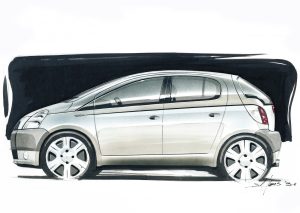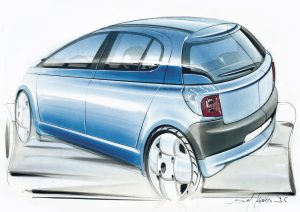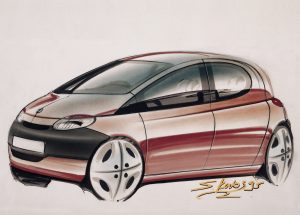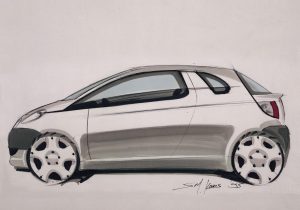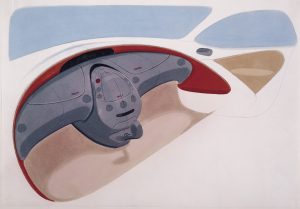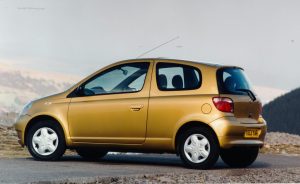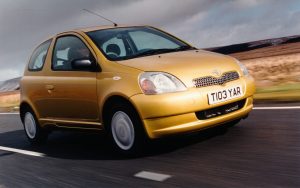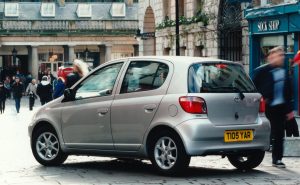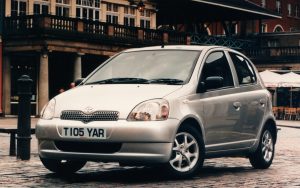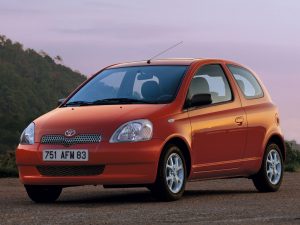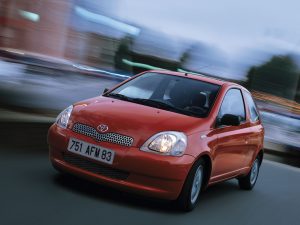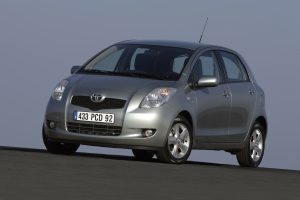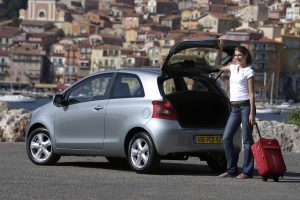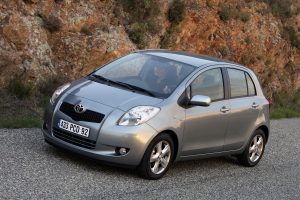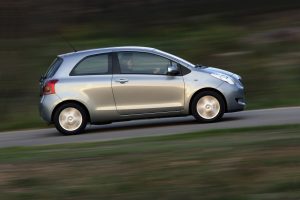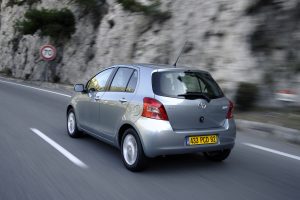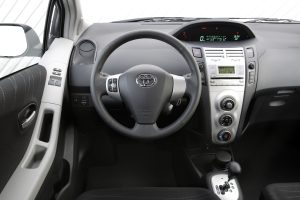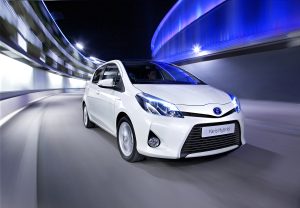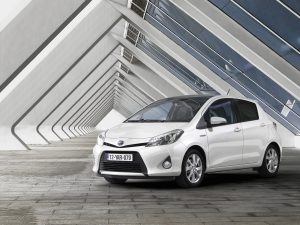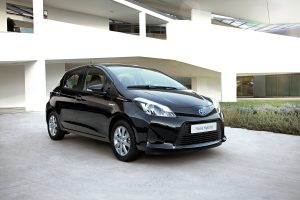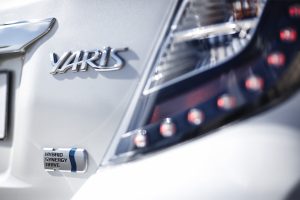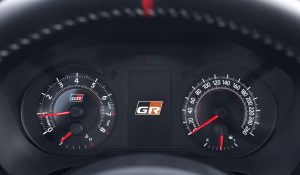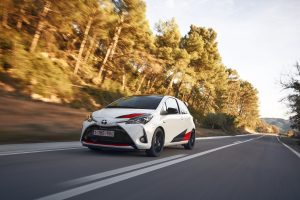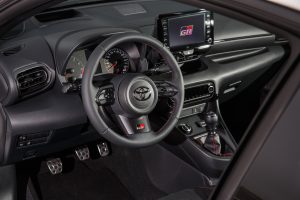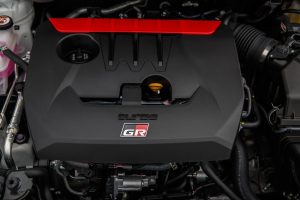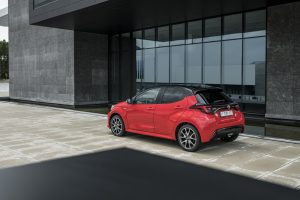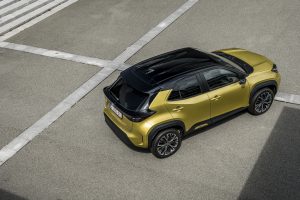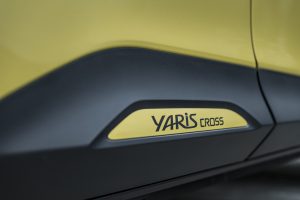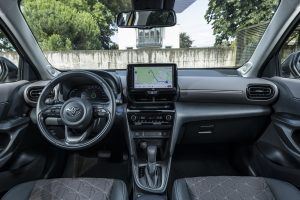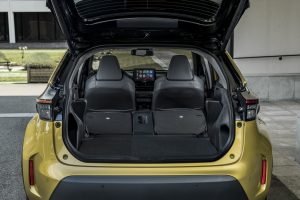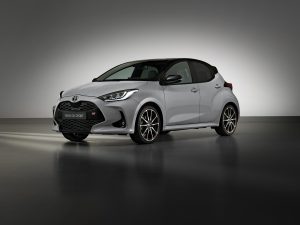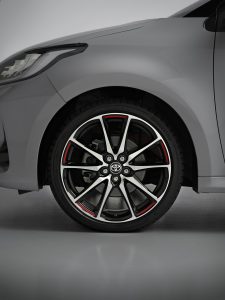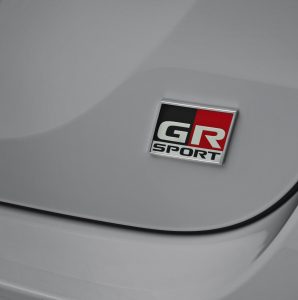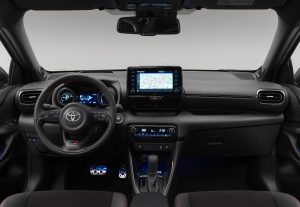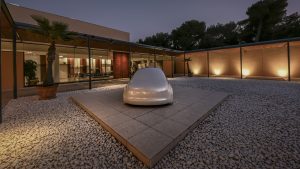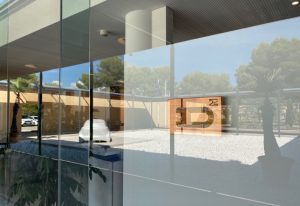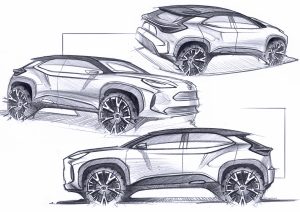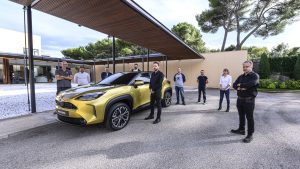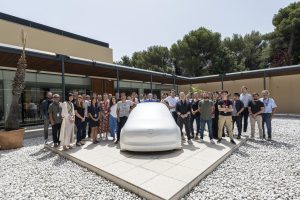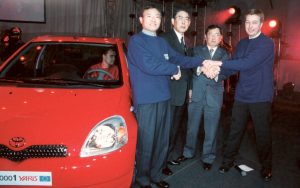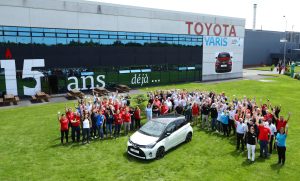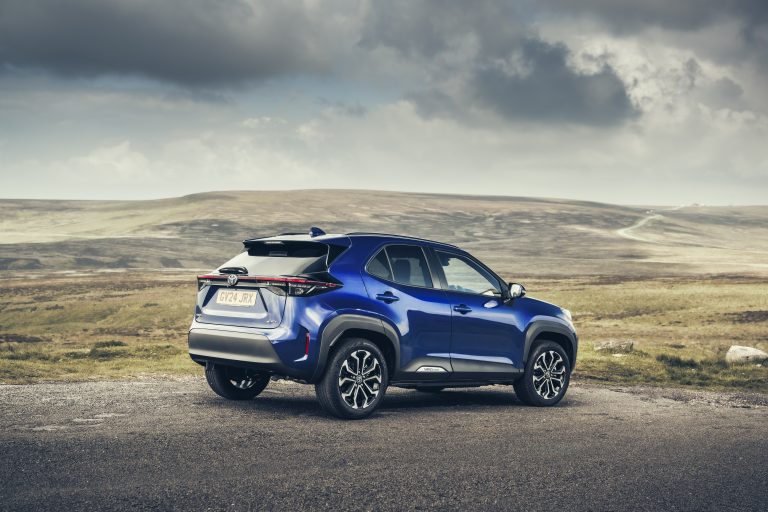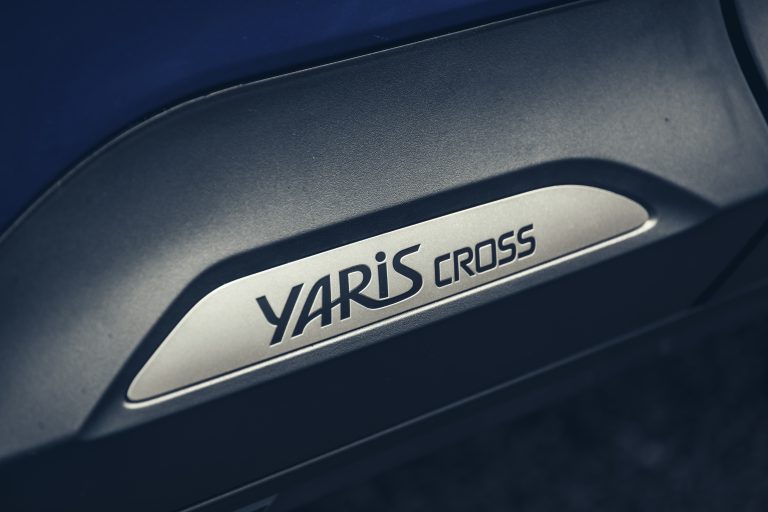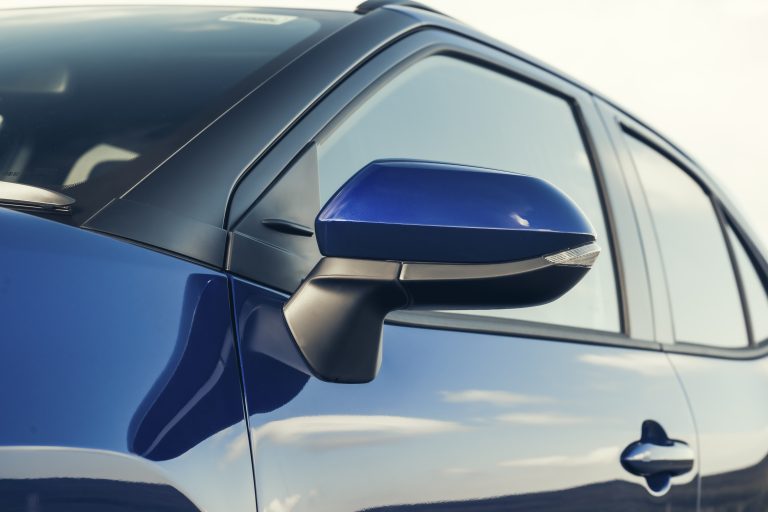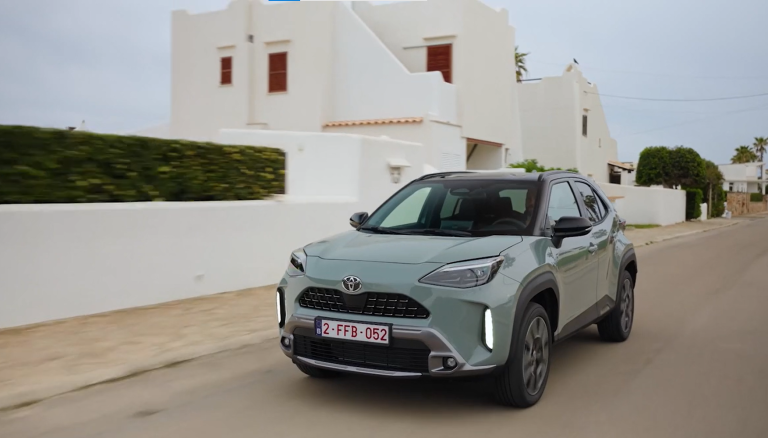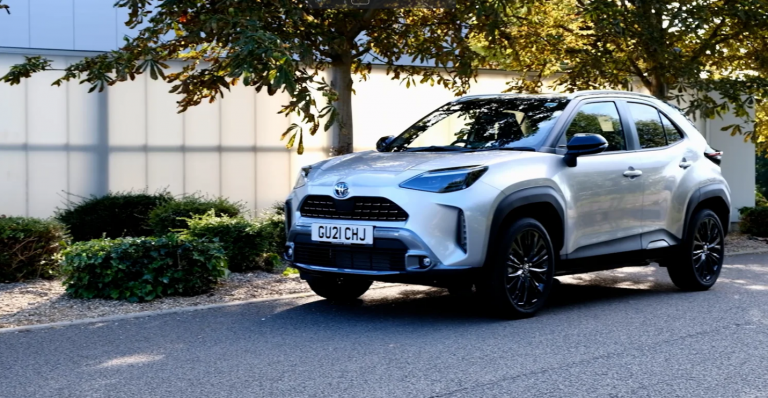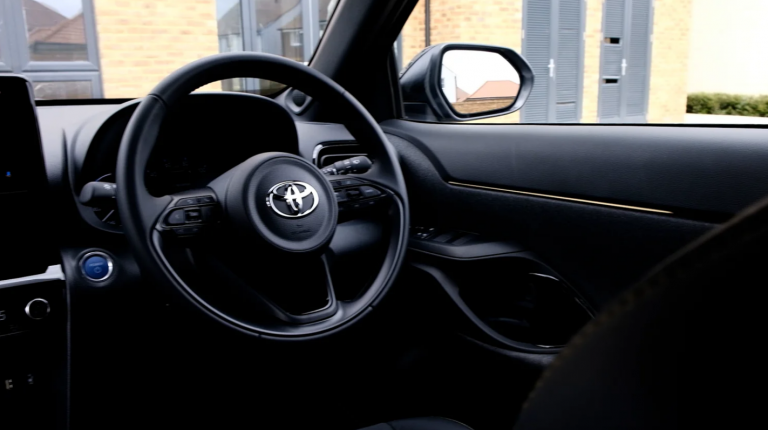Toyota’s “Little Genius” that made a big impact: Yaris reaches landmark of 10 million global sales
- Toyota’s trend-setting Yaris reaches global sales milestone in its 25th year of production
- Yaris joins Corolla, Camry, RAV4, Hilux and Land Cruiser with eight-figure sales – and counting
- Across four generations, Yaris has regularly set the standards for safety and technology for small, B-segment cars
- 10 millionth car, a Yaris GR Sport, produced at Toyota Motor Manufacturing France, home of European Yaris production since 2001
The ever-popular, multi-award-winning Yaris* nameplate has reached 10 million cumulative worldwide sales, performance which earns it a place alongside Toyota’s illustrious eight-figure achievers – Corolla, Camry, RAV4, Hilux and Land Cruiser.
Yaris has consistently been a pioneer, introducing new technologies and concepts to the compact car market for almost a quarter of a century. Its spirit of innovation has helped maintain its status as one of Toyota’s consistently best-selling models in the UK and Europe.
The current, fourth generation Yaris has demonstrated its ability to adapt to changing customer needs, its “family” growing to include the widely acclaimed GR Yaris pure performance sports car in 2020 and the high-riding Yaris Cross urban crossover SUV in 2021.
From the launch of the original model in 1997 to the end of February 2023, cumulative sales of Yaris family models in Europe had reached 5,155,506; these include 715,845 sold in the UK. In 2022, Yaris accounted for more than one third of Toyota’s total European sales and eight per cent of the market segment; in the UK the proportions for the hybrid hatchback were greater yet, at 21.7 and 10 per cent, respectively.
Yaris is a genuinely global model, manufactured at sites around the world. Initial production started in January 1989 at the Takaoka plant in Japan; today it has production bases in Japan, Brazil, China, Taiwan, Indonesia, Malaysia, Pakistan, Thailand, France and the Czech Republic. Toyota Motor Manufacturing France has produced Yaris since 2001 and Yaris Cross since 2021, the same year that Toyota Motor Manufacturing Czech Republic launched additional production to meet increasing demand. More than 4.6 million Yaris have been built in Europe (to end of 2022). Key components – engines and transmission – are supplied by Toyota Motor Manufacturing Poland.
The first generation Yaris became the first Toyota to be named European Car of the Year, in 2000. That accolade was matched by the Toyota Vitz (the model’s name in Japan) which won the Japan Car of the Year title. Since that impressive start, each Yaris generation has been shortlisted for the European Car of the Year with the current model successfully claiming the award in 2021.
* The 10 million cumulative sales milestone includes the Yaris, Vitz, Yaris Cross and GR Yaris nameplates.
.
First generation – the Piccolo Genio (Little Genius)
In the late 1990s, Toyota moved to develop a new, global compact car for the 21st century, a brand-new model that would build on the achievements of the highly regarded Starlet supermini. It had to be modern in appearance and feature the latest technologies, previewing motoring in the new millennium by rewriting the rule book for small cars with its revolutionary “big-small” design.
The world had its first glimpse of Toyota’s vision with the Toyota Funtime concept, unveiled at the 1997 Frankfurt motor show. This was one of a series of “Fun” concept cars created to showcase the possibilities offered by shared platform engineering, styled at Toyota’s EPOC design centre in Brussels.
A year later, the new production Toyota Yaris made its debut at the Paris motor show. The exterior was styled at EPOC – which would soon change its name to Toyota European Design Development (ED2) – while the interior was a collaboration between Europe and Japan. The car was stylish, characterful and purposefully European in flavour, with a relatively tall, spacious and organically shaped body built around the central design concept of the human dimension.
Yaris was pleasingly compact on the outside, but boasted a comfortable and practical interior with more space than many larger vehicles, generous headroom and flexible seating to maximise storage.
The clever, minimalist packaging and appealing looks came without any compromise in safety: Yaris was rated the safest car in its class in Euro NCAP testing, setting precedent for each successive generation.
Power came courtesy of an advanced and efficient 1.0-litre petrol engine, nicknamed the Mighty Atom for its ability to deliver power equivalent to a traditional 1.4-litre unit – 67bhp. Its quality earned it the inaugural International Engine of the Year award in 1999.
Yaris soon sealed its place in Toyota history when it was named 2000 European Car of the Year, the first model from the brand to achieve the honour, bestowed by a panel of the region’s leading automotive journalists. The jury praised Yaris’s looks, the versatility of its cabin and the excellence of its engine, which it said was the best money could buy. Within the year, a more powerful 1.3-litre unit with intelligent variable valve-timing (VVT-i) was added to the line-up in a new, higher-specification five-door model.
In 2001, Yaris helped launch Toyota’s T-Sport performance brand in Europe. The three-door Yaris T-Sport was equipped with a high-revving 105bhp 1.5-litre VVT-i engine, a retuned chassis, strengthened bodyshell and sporty interior. This class-leading hot hatch was quicker from 0-60mph than most 1.6-litre competitors at time, at 9.0 seconds, and gave faster acceleration in the mid-range (40 to 60mph) than any of its comparable competitors. The Yaris T-Sport’s success laid the foundations for performance versions to be included in the line-up of every Yaris generation since.
Innovation continued with the introduction of a 1.4-litre D-4D diesel engine in 2002, the world’s first all-aluminium diesel power plant. Its arrival completed the powertrain line-up for the first generation Yaris.
Yaris quickly became a favourite with customers across Europe, who found it a practical, fun and fashionable solution to the demands of everyday urban life and a reliable partner for longer distances. Its popularity is evidenced by more than 1.2 million worldwide sales of the first generation models. The car’s innovative and amicable character is perhaps best summed up by the tagline used by Toyota in an advertising campaign in Italy which affectionately nicknamed the new car the piccolo genio or “little genius”.
One car, many names
The now well-known Yaris name is derived from “Charis”, the singular form of Charites, the Greek goddesses of charm, beauty, nature, human creativity, goodwill and fertility.
Up until the launch of the current generation, the model was marketed as Vitz in Japan and some other markets. Depending on variant and region, its also been known as the Toyota Platz, Echo, Belta, Vios and Scion iA. In some markets is has also appeared as the Daihatsu Charade and Mazda2.
Second generation – a five-star performer
Yaris grew up with its second generation, launched in the UK Europe for 2005. The car’s reputation for clever packaging for optimal interior space and comfort, combined with advanced technology for safety and performance, was enhanced, while the user experience became more refined.
A “big car thinking” approach and larger dimensions all round made Yaris roomier than ever, delivering space to rival cars from the larger C-segment. Three adults could sit comfortably in the back, thanks to a flat rear floor and a 60:40-split rear seat in which both sections could be slid and recline, giving up to 880mm of leg room.
A best-in-class 737 litres of load space was achieved in part via Toyota’s convenient Easy Flat system. This allowed quick and easy folding of the rear seats to create a flat load floor. Attention to detail and passenger comfort included fine-tuning the sound of the doors closing and providing more than 18 litres of storage capacity within the dashboard alone.
Performance and efficiency were also enhanced and driving dynamics and ride comfort, were improved, helped by an aerodynamically efficient body with a low, 0.3 drag coefficient.
Yaris extended its enviable reputation for setting higher safety standards with a five-star Euro NCAP rating for occupant protection – a first for the model. Key to this was Toyota’s advanced Minimal Intrusion Cabin System and up to nine air bags installed throughout the cabin, including a driver’s knee airbag – another milestone for a car of Yaris’s size.
Three and five-door versions were offered, with a choice of three engines. A new 1.0-litre VVT-i petrol powerplant delivered economy and performance while remaining lightweight, producing class-leading power (67bhp) and torque (93Nm). The 1.3-litre VVT-i unit carried over from the previous generation remained popular, with its low-end torque and high-end power improved for a sporty yet smooth feel. The 1.4-litre D-4D diesel engine was revised taking power up to 89bhp at 3,600 rpm.
As Yaris gained in popularity, clamour for a sportier option was met by the Yaris TS. This new sports hatchback was launched at the 2006 Paris motor show. It was equipped with a new 130bhp 1.8 litre Dual VVT-i engine with a top speed of 121mph, sports suspension and sports styling, including a rear spoiler and side skirts.
With environmental awareness on the rise, customer demand for smaller, more efficient cars was accelerating in Europe. Yaris led the way by combining urban good looks with engineering innovation: Toyota Optimal Drive technology was introduced in 2009, bringing fuel efficiency and emissions improvements without compromising the model’s famously nimble performance.
Third generation – hello hybrid
In 2012, the third generation Yaris revolutionised the small car market by becoming the first car in its class to offer a full hybrid electric powertrain option. Toyota dedicated three years’ development work to revise its Hybrid Synergy Drive technology for Yaris, including redesigning around 70 per cent of the engine parts. The result was the company’s lightest and most compact system yet, ensuring its use did not compromise Yaris’s performance, comfort or load space.
Yaris Hybrid became symbolic of Toyota’s dedication to making the efficiency and stress-free driving benefits of hybrid accessible to an ever-growing number customers and its commitment to offering the technology across its model range.
The 98bhp system delivered best-in-class performance and an EV all-electric driving capability with no harmful exhaust emissions. Key features included state-of-the-art exhaust gas recirculation technology and an electric water pump.
The third generation Yaris also presented a stylish and sophisticated new look, amplified by bold colour options and an even more aerodynamically efficient body shape.
Major revisions were introduced in 2017, an £80 million project led by Toyota’s ED2 and engineering teams in Europe which saw more than 900 new parts introduced to improve design, dynamic performance and safety. As well as a fresh look, the changes included the adoption of Toyota Safety Sense active safety and driver assistance systems.
Toyota’s return to the FIA World Rally Championship (WRC) in 2017 with Toyota Gazoo Racing led to the development of the limited-edition Yaris GRMN, the first GRMN (which stands for “Gazoo Racing tuned by the Meister of Nürburgring”) performance Toyota to be built and sold in Europe. Its authentic sportscar quality ensured all 400 units were sold before the car even reached the showroom.
In 2018, the Toyota Gazoo Racing-inspired Yaris GR Sport was added to the range, the first GR Sport specification model to be launched in Europe. The success of this sports-themed grade has led to it being introduced across the a wide range of Toyota models, including Yaris Cross, Corolla, RAV4 and Hilux.
Fourth generation – dynamic performance and safety
Toyota’s ambition for the fourth generation Yaris, launched in 2020, was for it to be the world’s safest compact car. To this end, the it was equipped as standard with a number of advanced driver assist systems – ADAS. It was also the first model to be known worldwide as Yaris.
A return to the original “big-small” design concept delivered a more dynamic appearance in a car that was shorter, wider and lower than the previous model. The powerful exterior design expressed the agility and compactness required to negotiate city driving and parking, while retaining interior space and comfort.
A key element to achieving greater ambitions for the fourth generation was the Toyota New Global Architecture (TNGA) GA-B platform. Yaris was the first compact car to be built on this modular platform which enhanced dynamic performance and improved ride and handling, via a low centre of gravity and high-rigidity body.
The GA-B platform also contributed to an eye-catching design, styled on the stance of a sprinter in the starting blocks. A wider, lower and more compact appearance, and lower seating position for the driver, created a “condensed and agile” look from an energetic, dynamic car that’s always ready to go.
Overall drivetrain efficiency was increased by 22 per cent. This was at no cost to performance, which benefited from a 16 per cent improvement, to a total system output of 114bhp. A more engaging drive came via sharper throttle response which contributed to a 15 per cent reduction in 0-62mph acceleration time, now standing at a brisk 9.7 seconds.
The latest generation of hybrid technology was optimised for weight, performance and efficiency, which transformed Yaris’s EV driving capabilities. The quiet refinement of an all-electric drive could be enjoyed at speeds up to 83mph while enhanced hybrid power delivered improved acceleration at low speeds and on the motorway, with more linear acceleration.
The fourth generation Yaris was again Toyota’s most popular model in Europe and became the best-selling model in the region for the first time, thanks to its modern combination of compact, well-equipped urban chic and the best fuel consumption in class.
Just over two decades since the original Yaris was named European Car of the Year, the fourth generation model repeated the feat. The jury praised the car’s hybrid technology for its smooth driving, low emissions and accessible price point – illustrating why more than 80 per cent of European Yaris buyers choose the hybrid powertrain. In the UK, the fourth generation was a hybrid-only range. Yaris was also recognised for its design, dynamic performance, and class-leading safety.
In 2022, the new Yaris GR Sport went on sale with the exclusive, new Dynamic Grey exterior colour and bi-tone black accenting. Bespoke 18-inch wheels with machined red accent lines reinforce the Gazoo Racing lineage and the front grille has a mesh design with a distinct “G” motif. The Yaris GR Sport also features suspension tuning and enhanced body rigidity for a more responsive, comfortable and engaging experience.
GR Yaris – award-winning thoroughbred sports car
In 2020, GR Yaris followed in the wheel tracks of the successful Yaris GRMN and Yaris GR Sport as the first Gazoo Racing pure performance model.
It was inspired by the success of the Yaris World Rally Car, which earned the Toyota Gazoo Racing World Rally Team one manufacturers’ title and two drivers’ and co-drivers’ titles. It maintained the nameplate’s role as a pathfinder for innovative technologies and received unprecedented acclaim, becoming an instant modern classic.
GR Yaris was developed directly from Toyota’s rally experience on a unique platform which combines the new GA-B and a rear section adapted from the larger GA-C platform. It incorporates lightweight aluminium body panels, a forged carbon composite roof and other weight-saving parts throughout the car.
At its heart is the world’s most powerful three-cylinder engine; it is also the smallest and lightest 1.6-litre turbo. Producing 257bhp and 360Nm of torque, it launches the GR Yaris from rest to 62mph in just 5.5 seconds, and on to an electronically limited top speed of 143mph.
A kerb weight of 1,280kg gives an excellent weight-to-power ratio of 4.9kg per bhp distributed via the permanent, electronically controlled all-wheel drive GR-Four system. That potent combination ensured the limited production of 25,000 units was rapidly a sell-out, snapped up by enthusiasts keen to experience the most extreme Yaris yet created.
GR Yaris is also in the vanguard of Toyota’s quest for a carbon neutral future, for production cars and motorsport. Illustrating the company’s ongoing commitment to investing in new and varied powertrain technology, a development GR Yaris H2, featuring a hydrogen-powered combustion engine with near-zero tailpipe emissions, made its European debut in August 2021. Toyota Motor Corporation President Akio Toyoda, co-driven by rally legend Juha Kankkunen, completed exhibition runs in the car at the Ypres Rally in Belgium.
With the change in regulations in the World Rally Championship, Toyota Gazoo Racing introduced the GR Yaris Rally1, based on the road going model, for the 2022 season.
To date, Toyota Gazoo Racing World Rally Team have achieved three manufacturers’ and four drivers’ and co-drivers’ championship titles, bringing Toyota’s WRC tally to six manufacturers’ titles.
Yaris Cross – An Authentic SUV
Launched in 2021, Yaris Cross brought together Toyota’s rich experience and know-how in small cars with its heritage of innovative SUV design and engineering to create an all-new model, perfectly suited to daily use but offering adventure and a fun-to-drive spirit.
Powerful styling expresses robustness and agility in a body that’s compact, giving easy manoeuvrability suitable for urban life, while allowing for an interior with plenty of comfort and generous load capacity, following the established Yaris “big-small” philosophy.
Yaris Cross delivers genuine SUV performance with Toyota’s proven intelligent all-wheel drive system that uses an additional, independent electric motor on the rear axle to provide extra grip and stability when pulling away and cornering, and more confidence when driving on slippery surfaces.
The compact and lightweight AWD-i system design minimises the impact on fuel and emissions efficiency. Class-leading performance for a B-segment SUV with AWD has helped it become one of Toyota’s best-sellers in Europe.
Shortly after launch, Yaris Cross cemented its pedigree in the multiple award-winning Yaris family when it was named the 2022 World Urban Car in the World Car Awards, selected by a 102-member strong jury of international journalists.
Designed in Europe
From the first generation onwards, Toyota’s European design team has left its mark on Yaris, initially via EPOC in Brussels and, later at ED2 after its relocation to larger premises on the French Riviera, in 2000.
This move was a clear statement of how Toyota wanted to strengthen its European design development capabilities, supporting its ambitious production and sales plans for the region. As part of the Global Toyota design network, ED2 keeps its finger on the pulse of European taste, customs, values and trends; Yaris has been inspired by these insights throughout its history.
ED2 shares responsibilities with design centres in Japan. As with the first generation, the exterior of the second generation Yaris in 2006 originated from ED2, while the centre also contributed to the two facelifts of the third generation model. For the fourth generation Yaris, ED2 was tasked with the Colour, Material and Finishing (CMF) while Yaris Cross gave designers expanded responsibilities to cover not only CMF, but exterior design too, with production design being managed in Japan.
Built in Europe
In October 1998 Toyota broke ground on a new high-tech manufacturing facility in Valenciennes, France to supplement Yaris production from the Takaoka Plant, anticipating demand for the first generation model. From the outset, Toyota Motor Manufacturing France (TMMF) has been designed to be a ‘green, clean and lean factory of the 21st Century’. Its size is 30% more compact versus a typical automotive plant of that time, giving it a head start in making significant reductions in energy usage and emissions. In some workshops, the storage areas are as much as 10 times more compact compared to automotive industry standards for plants with similar production output.
TMMF went live in January 2001 with an initial annual production capacity of 150,000 units. By 2022, capacity had grown to 255,584 units, making the plant the largest automotive production site in France by volume.
The plant now employs 5,000 people and has benefited from cumulative investment of 1.5 billion euros (approx. £1.3 billion). This includes the required capital investments for each new generation and model as well as resources committed to continuous improvement in environmental performance. Only a few years after the complex opened, part of the roof was covered with photovoltaic panels and a 400m² solar wall had been installed.
Since 2019, 100 per cent of the site’s electricity is from renewable sources and, since 2012, on-site basins, with a combined volume of 16,000m³, allow it to be fully autonomous in industrial water. Most of its needs are met by rainwater collected in the basins while the rest is recycled from the plant’s waste water, pre-treated to meet required standards before use in the production process.
Over the past 20 years, TMMF has successfully reduced the energy required to produce a Yaris by 59 per cent, which has earned it recognition within Toyotaas a global leader. Adding to these achievements is the recent installation of a new paint line in the plastics shop, a Toyota global first, that is expected to deliver annual savings of 1,000 tonnes of CO2. TMMF has set itself the goal to be carbon neutral by 2030 and to produce zero carbon emissions by 2040.
The milestone 10 millionth car–a Yaris GR SPORT in Dynamic Grey–rolled off the production lines in TMMF on 30 March 30 and was delivered to a customer from the Paris region.
Senior management quotes
Didier Leroy, Chairman, Toyota Motor Europe: “Today, 22 years after the grand opening of Toyota’s plant in France, TMMF celebrates the 10 millionth Yaris car being sold. This global sales milestone is a token of the confidence that the Toyota group has continuously demonstrated towards this French site that has produced more than 4.5 million Yaris and Yaris Cross cars since its establishment in 2001. It is an honour and my great pleasure that we can share this moment today with the 5,000 members at the site.”
Matt Harrison, President and CEO, Toyota Motor Europe: “I vividly recall when Yaris first came into the world. I remember observing the launch of the first generation, distinguished by its ‘big-small’ character at a time when I was working for another company. It was immediately clear to me that Yaris would redefine the small car segment and indeed it went on to become the 2000 Car of the Year. Two decades later, the fourth generation Yaris was also awarded Car of the Year, and I had the great honour of receiving the trophy on behalf of the company. Yaris has been synonymous with Toyota’s growth in Europe, becoming our best-selling and most produced vehicle in the region. It has also redefined our brand accessibility and awareness. The Yaris family has expanded, following the Yaris Cross’s introduction in September 2021, together with GR Yaris, a thoroughbred performance car born from our WRC success. The Yaris success story isn’t over yet and I’m looking forward to seeing the exciting role it will play in the future.”
Marvin Cooke, Executive Vice President, Toyota Motor Europe: “Today we are celebrating the Toyota Yaris – a European car that has been designed, developed and built, for Europeans and by Europeans. This global sales milestone is a clear sign of customer confidence in and appreciation of our famous built-in quality. While we continue to build on our brand promise of Quality, Durability and Reliability, we are committed to reducing carbon beyond the vehicles we sell. In Europe, we have committed to reaching carbon neutrality by 2040 in all our operations, and by 2030 at all our manufacturing facilities. I have confidence in the contribution and wisdom of our passionate employees across Europe to deliver on our goals.”
Jim Crosbie, President, Toyota Motor Manufacturing France: “I feel honoured and proud that the 10 millionth global Yaris has been produced at Toyota Motor Manufacturing France (TMMF), 22 years after the plant was established. Another joyful milestone has been added to TMMF’s rich history with cumulative production of more than 4.5 million vehicles covering four generations of Yaris, the production of the world’s first hybrid in the B-segment and the recent addition of a second model, the B-SUV Yaris Cross. This would not have been possible without the great teamwork of our 5,000 members as well as the support of our suppliers, business partners and the entire community who have all significantly contributed to today’s celebratory milestone.”
ENDS


